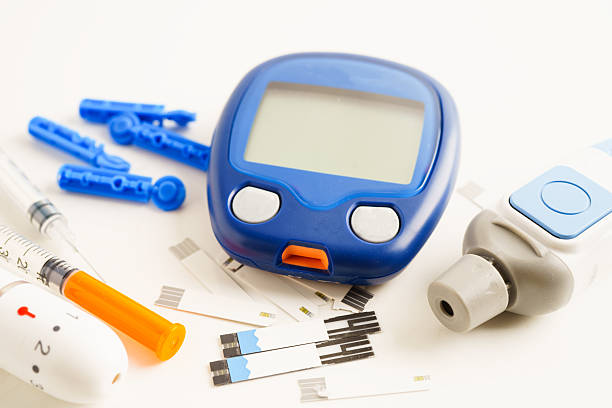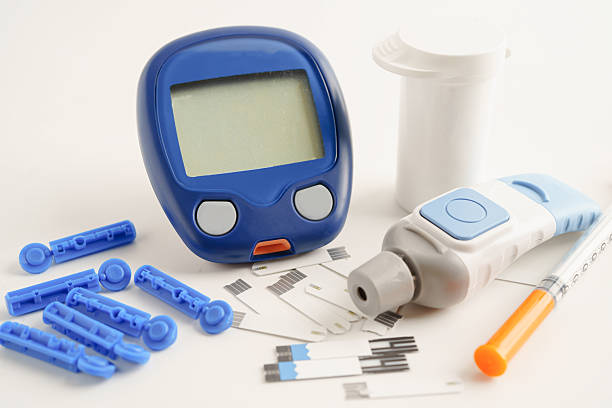Introduction
Diabetes is one of the most common chronic conditions in the world, affecting people of all ages and backgrounds. According to the World Health Organization (WHO), more than 422 million people are living with diabetes, and that number continues to rise each year. This increase is linked to lifestyle factors such as poor diet, lack of physical activity, and rising obesity rates, as well as genetics and aging populations.
For many, living with diabetes means dealing with the constant task of keeping blood sugar in balance—a challenge that requires healthy eating habits, regular physical activity, consistent monitoring, and often daily medication or insulin therapy. Without proper management, diabetes can lead to serious complications like heart disease, kidney problems, and vision loss.
But here’s the good news: science and technology are advancing faster than ever. Patients today have access to treatments and tools that were not available even a decade ago. From innovative medications that work in new ways to regulate blood sugar, to cutting-edge devices like continuous glucose monitors and insulin pumps, managing diabetes has become more precise and less stressful. These modern solutions give patients more control, reduce the risk of complications, and improve quality of life. In many cases, new treatments also reduce the daily burden of diabetes care, offering people the freedom to live healthier and more flexible lives.
In this guide, we’ll explore the most exciting breakthroughs in diabetes care, how they work, and what they mean for your health.
Why Innovation in Diabetes Care Matters
For many years, diabetes treatment meant a few basic options: diet, exercise, pills, and insulin injections. While these remain important, they don’t always offer perfect control. Poorly managed diabetes can lead to serious complications such as:
- Heart disease and stroke
- Kidney damage
- Nerve problems (neuropathy)
- Vision loss (diabetic retinopathy)
- Amputation risk due to poor circulation
That’s why innovation is so critical. New treatments aim not only to lower blood sugar but also to:
- Protect vital organs like the heart and kidneys
- Make daily management easier and less stressful
- Prevent long-term complications
- Improve overall quality of life
When patients have more effective tools, they’re more likely to stick with treatment and achieve better results.
Cutting-Edge Medications for Diabetes

1. GLP-1 Receptor Agonists
GLP-1 receptor agonists are one of the biggest breakthroughs in recent years. Medications such as Ozempic, Rybelsus, and Victoza mimic a natural hormone that helps control blood sugar and appetite.
How They Work:
- Slow digestion, preventing blood sugar spikes after meals
- Stimulate insulin production only when blood sugar is high
- Reduce hunger, leading to weight loss
Why They’re Popular:
- Significant weight loss in many patients
- Heart-protective benefits
- Easy to use (weekly injections or daily pills)
Learn more about GLP-1 medications from the American Diabetes Association.
2. SGLT2 Inhibitors
SGLT2 inhibitors, such as Jardiance, Invokana, and Farxiga, are part of a newer class of diabetes medications that have changed the way doctors manage type 2 diabetes. Unlike many traditional diabetes drugs that focus on insulin production or insulin sensitivity, SGLT2 inhibitors work directly in the kidneys. They block a protein called sodium-glucose co-transporter-2 (SGLT2), which normally reabsorbs sugar back into the blood. By stopping this process, these medications allow the body to get rid of extra sugar through urine, which helps lower blood sugar levels naturally and safely.
Key Benefits:
- Lower blood sugar without relying on insulin
- Reduce the risk of heart failure and protect heart health
- Support kidney function and slow down kidney disease progression
- May also help with modest weight loss and lower blood pressure
Because of these wide-ranging benefits, doctors often prescribe SGLT2 inhibitors alongside other diabetes treatments such as metformin, GLP-1 receptor agonists, or insulin. This combination approach offers stronger blood sugar control while also providing added protection for the heart and kidneys, which are two of the most vulnerable organs in people with diabetes. Many leading health organizations, including the American Diabetes Association, recommend SGLT2 inhibitors as a top treatment option for patients with type 2 diabetes, especially those with heart or kidney concerns.
3. Dual-Action Medications (GLP-1 + GIP)
The newest generation of diabetes drugs, such as Mounjaro (tirzepatide), represents a major step forward in treatment options. Unlike older medications that target only one pathway, Mounjaro works on two important hormones: GLP-1 (glucagon-like peptide-1) and GIP (glucose-dependent insulinotropic polypeptide). These hormones play key roles in regulating blood sugar and appetite. By combining both pathways, tirzepatide provides a stronger and more balanced effect compared to single-action drugs. It not only helps the body release insulin when blood sugar is high, but also reduces appetite, slows digestion, and supports long-term weight control.
What This Means for Patients:
- Better blood sugar management – Patients often see lower A1C levels and improved daily glucose stability.
- Significant weight loss – Clinical studies show that some people lose up to 20% of their body weight, which can also improve insulin sensitivity.
- Potential protection against cardiovascular disease – Early data suggest it may reduce risks linked to heart disease, one of the most common complications of type 2 diabetes.
- Improved quality of life – With fewer blood sugar swings and reduced hunger, patients often find diabetes management less stressful.
Because of its dual-action design, Mounjaro has quickly become one of the most talked-about treatments in diabetes care. Many experts believe it could shape the future of type 2 diabetes management by offering patients both stronger blood sugar control and meaningful weight reduction in a single medication.
Innovative Insulin Therapies
Faster-Acting Insulins
Traditional insulin can take 30 minutes or more to start working. New ultra-rapid insulins like Fiasp work in as little as 5 minutes, giving patients more flexibility around meals.
Concentrated Insulins
Some people need higher doses of insulin. New concentrated formulas allow smaller injection volumes, making treatment more comfortable.
Smart Insulin (In Development)
Researchers are testing insulin that responds automatically to blood sugar levels. Imagine an injection that releases insulin only when needed—reducing the risk of both highs and dangerous lows.

Breakthrough Technology in Diabetes Care
Continuous Glucose Monitors (CGMs)
Devices like Dexcom G7 and Freestyle Libre 3 are replacing finger sticks for many patients.
Advantages of CGMs:
- Provide 24/7 glucose readings
- Send alerts when sugar levels get too high or low
- Connect to smartphones for easy tracking
Studies show that patients using CGMs often achieve better control and fewer complications.
Insulin Pumps and Patch Pumps
Modern pumps, such as the Omnipod 5, provide continuous insulin delivery without multiple daily injections.
Benefits Include:
- More consistent blood sugar control
- Ability to adjust doses throughout the day
- Fewer needle sticks
Some pumps now connect with CGMs to form closed-loop systems, where insulin delivery is automatically adjusted based on glucose levels.
Artificial Pancreas Systems
Artificial pancreas technology is one of the most exciting innovations. These systems combine CGMs, pumps, and smart algorithms to mimic how a healthy pancreas works.
Advantages:
- Less manual work for patients
- Lower risk of dangerous lows
- More freedom in daily life
Non-Medication Innovations
Stem Cell Therapy
Scientists are studying how stem cells can be turned into insulin-producing beta cells and transplanted into patients. Early trials show promise for reducing or even eliminating the need for insulin injections.
Gene Therapy
Another potential breakthrough is gene therapy, which aims to “reprogram” the body’s own cells to produce insulin. While still experimental, this approach could lead to long-term or permanent solutions.
Digital Health and Telemedicine
Smartphone apps now track food, activity, and blood sugar in one place. Some even connect directly to CGMs or pumps, giving doctors real-time data. Telemedicine also allows patients to consult specialists without leaving home.
Lifestyle Innovations for Better Diabetes Care
While medications and technology are crucial, lifestyle changes remain powerful. New tools are making these changes easier to follow.
Examples Include:
- Virtual nutrition coaching – Personalized meal planning online
- AI-powered fitness apps – Workouts tailored to your blood sugar trends
- Stress management apps – Guided meditation and breathing exercises, which can lower blood sugar spikes
The Future of Diabetes Treatment
The future looks incredibly promising. Researchers are working on:
- Smart contact lenses that check glucose levels in tears
- Wearable patches that deliver insulin painlessly
- Once-weekly insulin injections for easier management
- Artificial intelligence to predict blood sugar patterns and recommend treatments
As these innovations progress, life with diabetes will continue to improve.

Practical Tips for Patients Considering New Treatments
- Consult your healthcare provider before making any changes.
- Ask about clinical trials if you’re interested in cutting-edge therapies.
- Check your insurance for coverage of devices like CGMs or pumps.
- Start slow—introduce one new treatment at a time.
- Stay updated by following trusted sources like the National Institute of Diabetes and Digestive and Kidney Diseases (NIDDK).
Conclusion: Taking Control with Innovation
Living with diabetes no longer has to mean constant finger pricks, rigid meal schedules, or fear of complications. Thanks to innovative medications, advanced insulin therapies, and breakthrough devices, managing blood sugar is becoming simpler and more effective than ever before.
The future is bright—and these treatments are helping people live longer, healthier, and more fulfilling lives.
What about you?
Have you tried any of these new diabetes treatments, or are you considering one? Share your experience in the comments—we’d love to hear your story!

